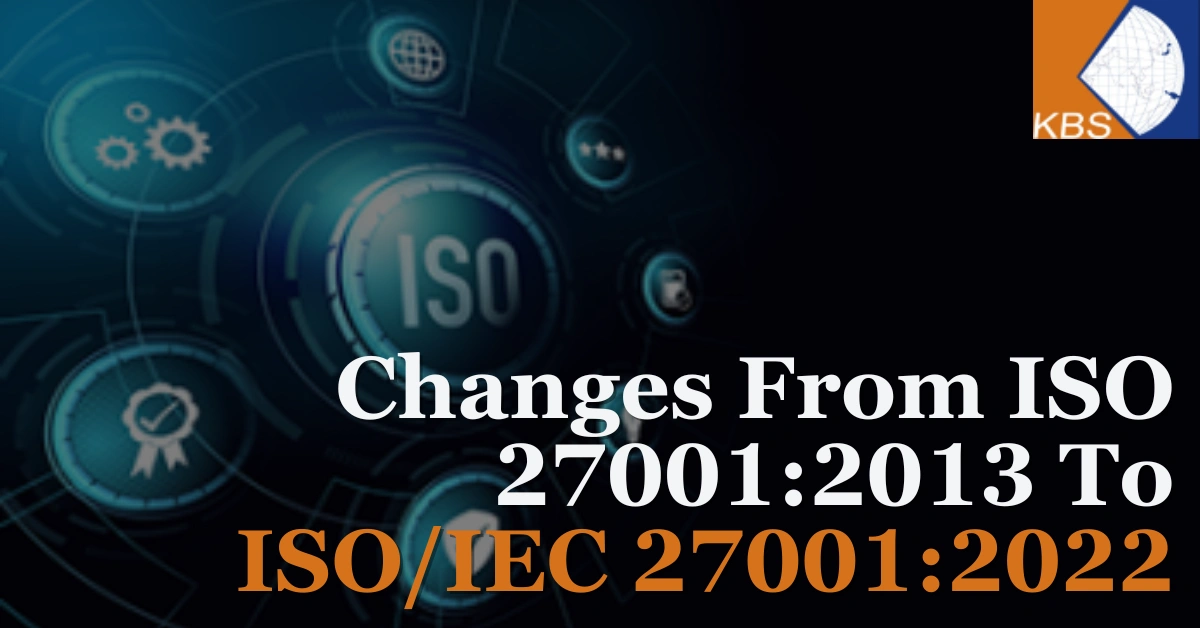
Organizations are always looking for ways to improve their information security management systems in the rapidly changing cybersecurity landscape. ISO/IEC 27001 serves as a robust framework that enables organizations to establish, implement, maintain, and continually improve their information security management system (ISMS). It is one of the most widely recognized standards for information security. ISO 27001:2013, the previous version, has recently been updated to reflect the shifting security issues of the digital age. This blog entry will investigate the massive changes from ISO 27001:2013 to ISO/IEC 27001:2022 and feature their suggestions for associations.
One of the noticeable changes in the ISO/IEC 27001:2022 standard is an expanded accentuation on the setting of the association and authority responsibility. Information security objectives can be affected by a variety of internal and external factors, including the requirements and expectations of interested parties. In order to guarantee that information security becomes an essential component of the organization’s overall strategic direction, top management’s involvement and commitment to driving the ISMS are also emphasized.
Risk management is given a stronger emphasis in the revised standard. Associations are presently expected to embrace a more all-encompassing and proactive way to deal with, distinguish, evaluate, and treat data security gambles. In addition to confidentiality, integrity, and availability, the risk assessment procedure has been expanded to include privacy, legal, regulatory, and contractual requirements. With this change, businesses are able to deal with a wider range of risks and better align their security measures with their business goals.
ISO/IEC 27001:2022 puts an expanded accentuation on data security administration inside associations. The standard requires organizations to establish a governance framework for information security that defines the roles, responsibilities, and authorities associated with information security. Additionally, it emphasizes the significance of clearly defining policies, procedures, and guidelines to support efficient information security management.
ISO/IEC 27001:2022 includes new requirements for organizations to develop and implement a communication strategy to recognise the significance of effective communication and awareness in managing information security. This procedure ought to guarantee that pertinent data security goals, obligations, and prerequisites are conveyed to all faculty and significant outside parties. Organizations can improve their capacity to detect, prevent, and respond to security incidents by fostering a culture of security awareness and knowledge sharing.
The new standard acknowledges the emergence of new threats and the shifting technological landscape. Cloud computing, mobile devices, and the Internet of Things (IoT) are just a few of the technology-related risks it addresses with several new controls. By incorporating these controls, organizations can better safeguard their information assets in a digital environment that is constantly shifting.
The alignment of ISO/IEC 27001:2022 with ISO’s High-Level Structure (HLS) makes it simpler for businesses to integrate their information security management system with other management systems, such as ISO 9001 and ISO 14001 for environmental management. The efficiency of the organization as a whole and a more holistic approach to risk management are both enhanced by this integration.
The updated standard emphasises managing information security risks posed by external parties because it recognizes the significance of supply chain security. In order to guarantee the confidentiality, integrity, and availability of information assets throughout the supply chain, businesses are required to assess the risks associated with their supply chain and establish the appropriate controls.
The requirements for incident management and response are expanded by ISO/IEC 27001:2022. An incident management procedure, which includes identifying, reporting, evaluating, and responding to information security incidents, must be established by businesses. This update mirrors the developing significance of ideal and compelling occurrence reactions to limit the effect of safety breaks.
The new standard presents upgraded controls for the administration of data resources. Based on the value, criticality, and vulnerability of their information assets, businesses are obligated to compile and update an inventory, as well as to devise appropriate security measures. This enables businesses to prioritize their security efforts effectively and ensures a methodical approach to protecting information assets.
In ISO/IEC 27001:2022, it is emphasized that businesses must incorporate business resilience and continuity into their information security management system. It is necessary for businesses to conduct assessments of the potential effects that incidents involving information security might have on their day-to-day operations and to put in place procedures to guarantee that essential functions will continue to function in the event of disruptions.
The transition of information security management systems from ISO 27001:2013 to ISO/IEC 27001:2022 is a significant turning point in their development. With associations continually confronting new and developing security challenges, the refreshed norm, in a joint effort with the brand name KBS Certificate Frameworks, furnishes a far-reaching structure that aligns with the ongoing danger scene and rising innovations.
Organizations can benefit from KBS Certification Systems’ expertise in information security management and ensure a smooth transition to the most recent version of the standard by partnering with them. In order to help businesses comply with ISO/IEC 27001:2022, KBS Certification Systems brings a wealth of knowledge and experience to the table when it comes to guiding them through the certification process.